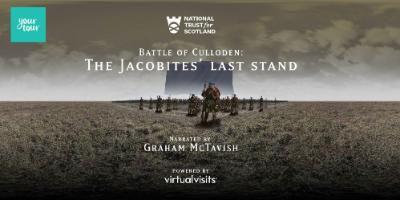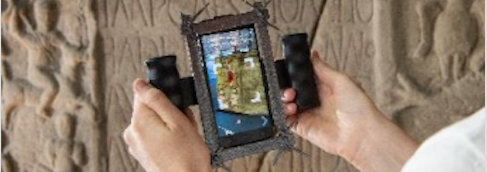National Trust for Scotland: Turning Theory into Practice
Published: 14 March 2022
Digital heritage plays an increasingly important role in the work of the National Trust for Scotland. Michael Terwey, Head of Heritage Services and Consultancy for NTS explains more about the challenges this has posed and the opportunities it has opened up.
 Michael Terwey is Head of Heritage Services and Consultancy for the National Trust for Scotland. His team’s work is at the core of the Trust’s operations, with expertise spanning a wide range of disciplines, from object and art collections, to archaeology, species, habitats and nature. Digital heritage plays an increasingly important role in the work of Michael and his colleagues.
Michael Terwey is Head of Heritage Services and Consultancy for the National Trust for Scotland. His team’s work is at the core of the Trust’s operations, with expertise spanning a wide range of disciplines, from object and art collections, to archaeology, species, habitats and nature. Digital heritage plays an increasingly important role in the work of Michael and his colleagues.
Responding to change
Conservation and protection are central to the National Trust for Scotland’s purpose, and it undertakes a variety of management and conservation practices to this end. Digital technology provides the tools necessary for addressing the challenges associated with the conservation and protection of the Trust’s properties and collections. Indeed, it can allow for greater analysis of a property or object’s condition and provide the Trust the ability to ensure that their chosen methods follow best practice.
Use of digital technology is not isolated to conservation, it is also having a significant impact upon how the Trust engages with its audiences and devises experiences for them, enabling the Trust to ensure that its properties remain relevant and exciting. Michael notes that “our ideas of what the past is and what’s interesting are constantly changing”; being able to address and appeal to those perceptions is important.
Creative opportunities
Although creating experiences for in-person visits to the Trust’s properties, the recent global pandemic demonstrated the importance of developing digital experiences for audiences too. Michael notes that digital technology has helped to remove the barrier of physical location, allowing them to share properties and collections with people who may not otherwise have the opportunity to visit Scotland. In considering these new audiences, Michael and his colleagues have been afforded greater creative opportunities when realising properties in digital spaces and devising different experiences. Michael notes that moving into digital realms enables his team to create a range of experiences for audiences to engage with, each targeting different groups or categories within those audiences. They can be specific, sharing more information about a property or object, considering factors such as the age or niche interests of different audiences in a way that they would not be able to when devising an in-person experience.
 The increased emphasis on digital heritage also allows Michael and his colleagues the opportunity to reconsider and explore what it means to recreate a physical space digitally; what it means to visit it. This is especially true of battlefields, spaces which are a blend of material heritage and intangible cultural heritage. For places such as Culloden, Michael notes that “the things that make it valuable aren’t necessarily visible to the naked eye.” Finding ways to share the richness of such spaces within a digital sphere for expanding audiences is an exciting opportunity; the chance to be creative and innovate.
The increased emphasis on digital heritage also allows Michael and his colleagues the opportunity to reconsider and explore what it means to recreate a physical space digitally; what it means to visit it. This is especially true of battlefields, spaces which are a blend of material heritage and intangible cultural heritage. For places such as Culloden, Michael notes that “the things that make it valuable aren’t necessarily visible to the naked eye.” Finding ways to share the richness of such spaces within a digital sphere for expanding audiences is an exciting opportunity; the chance to be creative and innovate.
Uncovering new perspectives
Michael asserts that partnering and being able to work with universities is enormously important to the National Trust for Scotland. The work of researchers helps the Trust to better understand the significance of their places; how best to conserve them and share their significance. Michael describes being able to access the insight and knowledge uncovered by research as a great asset, enabling him and his colleagues to “uncover new stories and new perspectives on the history” of collections and properties. However, he adds that partnering with the National Trust for Scotland is an equally valuable opportunity for researchers too. It’s not just a chance to turn theory into practice, but an opportunity to apply knowledge and research.
Are you based in the Cultural Heritage sector? Get in touch to let us know what the big challenges are – whether they relate to funding, capacity, capability, policy, etc.. Join the Digital Cultural Heritage Catalyst and collaborate with your peers to tackle the common issues.
First published: 14 March 2022


